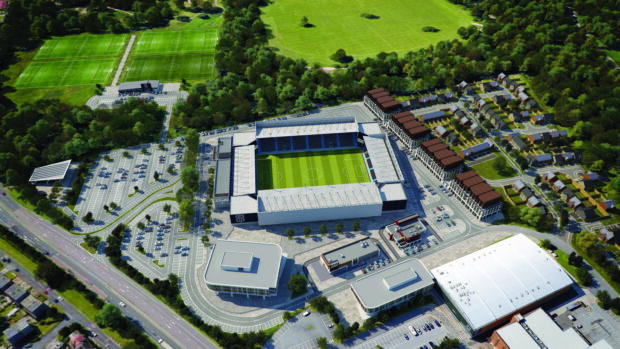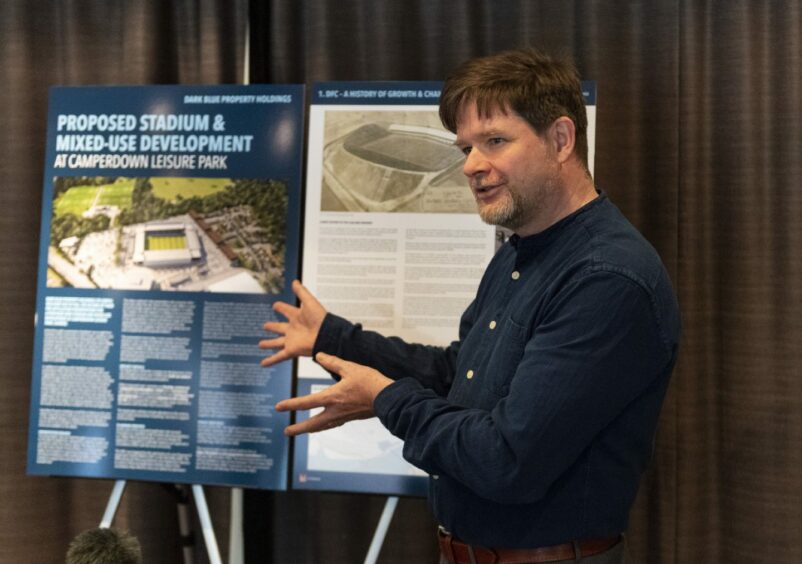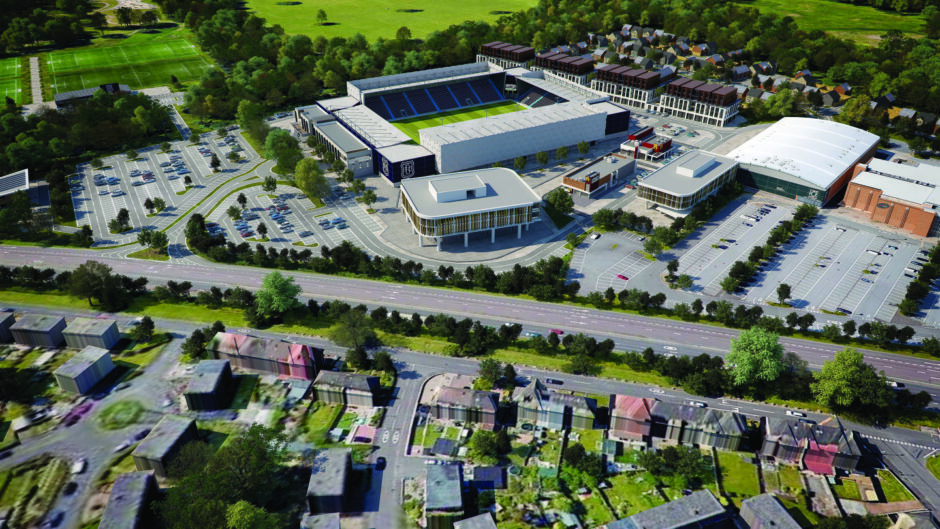What are the stadium developers doing to protect the environment in Camperdown Park?
There are at least two schools of thought over the new Dundee FC stadium development.
Some believe that the stadium is just what the city needs, while others are less positive.
But what is clear is that there will be mitigation measures in place to limit the negative impact on the environment.
There are four planning steps involved.
As part of the application, a series of environmental impact assessments are required.
But how will these actually work?
Independent consultants will complete these assessments.
Each aspect of the plans, from how many car parking spaces there will be, to the sort of roofing on the stadium, are all dependent on the feedback the planners receive.
Leadingham Jameson Rogers & Hynd (LJRH) are the architects designing the development.
Mark O’Connor is one of the lead architects for the bid.
He said: “As all of this information feeds in. Progressively you can make firmer and firmer decisions going forward.”
Developers will save mature trees
The application process has taken on concerns and made amendments – a process the architects say will continue as the bid progresses.
Unlike earlier designs, this stadium redesign will not involve cutting down a row of mature trees.
They will instead be incorporated into the design.
The stadium plan has also been redesigned to move away from the treeline, with the new plans aiming to “minimise the impact on trees in general,” according to the architects.
Mark said they are also giving “very serious consideration” to limiting the training pitches to three instead of four, which would reduce the amount of greenspace taken from Camperdown Park.
He added: “It’s such a precious environment – people are justifiably wanting to see that preserved.
“We have to demonstrate that the impact on Camperdown is minimal.”
Have they thought about the noise impact in Camperdown Park?
A study on the potential noise must be carried out.
Rowdy fans were a serious concern to those fighting against the stadium, with worries over a noise impact in Camperdown Park.
“There will be a thorough study of how sound will work (at the stadium),” Mark said.
“It’s broken down into activities on site that emit noise and activities on site and surrounding the site that are sensitive to noise.
“Clearly the stadium is something that will generate a lot of noise – we hope,” he joked.
“But you’ve got to be sensitive to people on the far side of the Kingsway.”
Sound specialists, or acousticians, will record the sound at the site as it is.
Using information available on existing stadiums of a similar size, they will be able to predict the potential noise levels with a stadium there in Camperdown.
The sound will be also assessed in areas like the wildlife centre and the housing around the Kingsway.
The council will then review estimated day-time and night-time noise levels to determine whether they are acceptable.
If the decibels are too high, acoustic fencing would be considered. The fabric of the stadium itself could be chosen based on its ability to dampen the noise.
Will the new Dundee FC training pitches be astroturf?
At least one of the training pitches for Dundee FC could be grass.
The others will likely be artificial grass (astroturf).
These pitches come with the benefit that the public could get use of them.
“Astroturf can cope with the impact far better than standard grass,” said Bob Hynd, a founding partner of the architectural firm working on the bid.
The planners are also considering a hybrid mix of artificial and a percentage of real grass.
Although all consultants were told to “endeavour to make this the most environmentally friendly development and stadium in Scotland”, astroturf is not beneficial to the environment.
The surface uses a huge volume of plastic and limits biodiversity.
Research by the Scottish Government, published in 2019, indicates this artificial grass can add to microplastic marine litter.
When will the stadium be built?
The developers are unable to provide a solid timeline.
This is because they have no way of knowing how long the different assessments will take.
“It’s really difficult to say,” said Emelda Maclean, of Dark Blue Property Holdings, the planners for the bid.
“If one issue becomes a bit more technical, then that study might take longer than other, more straightforward studies.
“Timelines are hard to really pin down although there is a desire to move this forward as quick as we can.”













Conversation